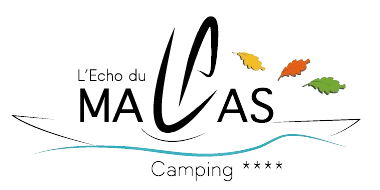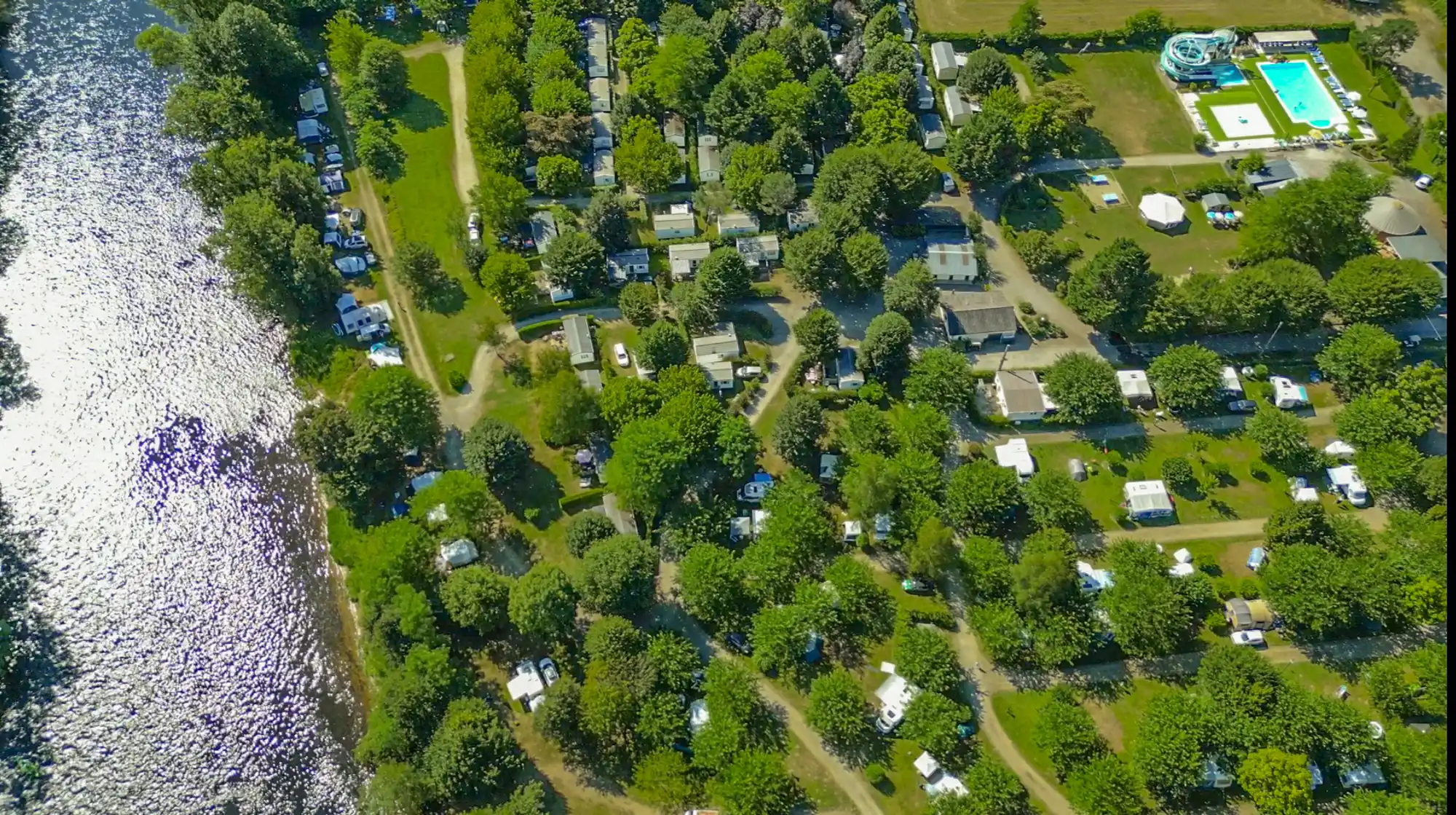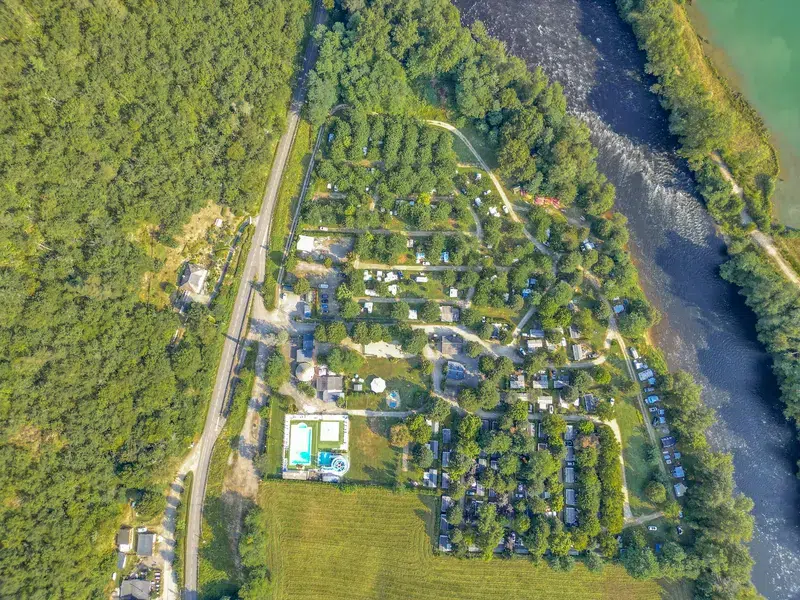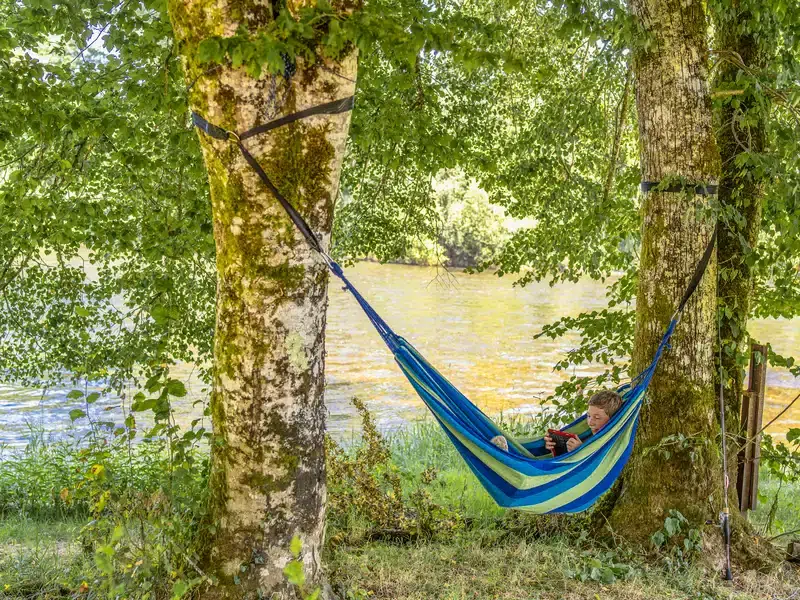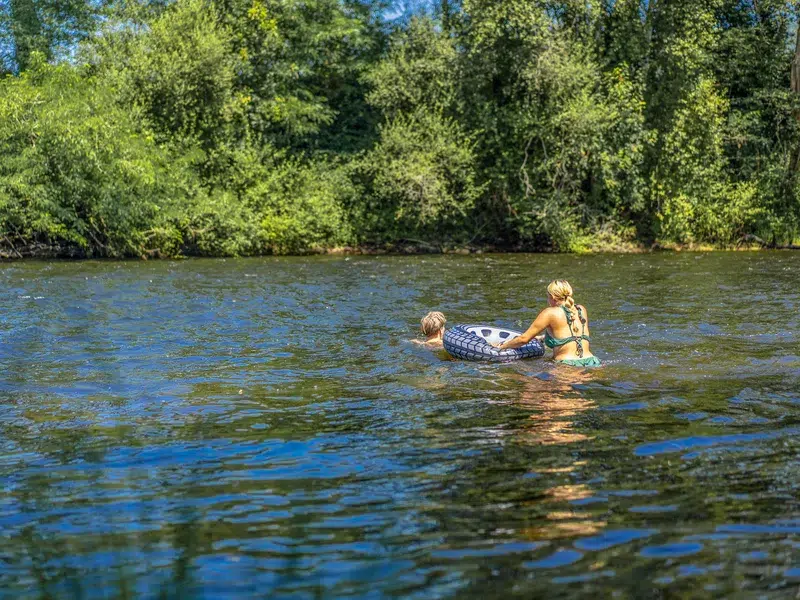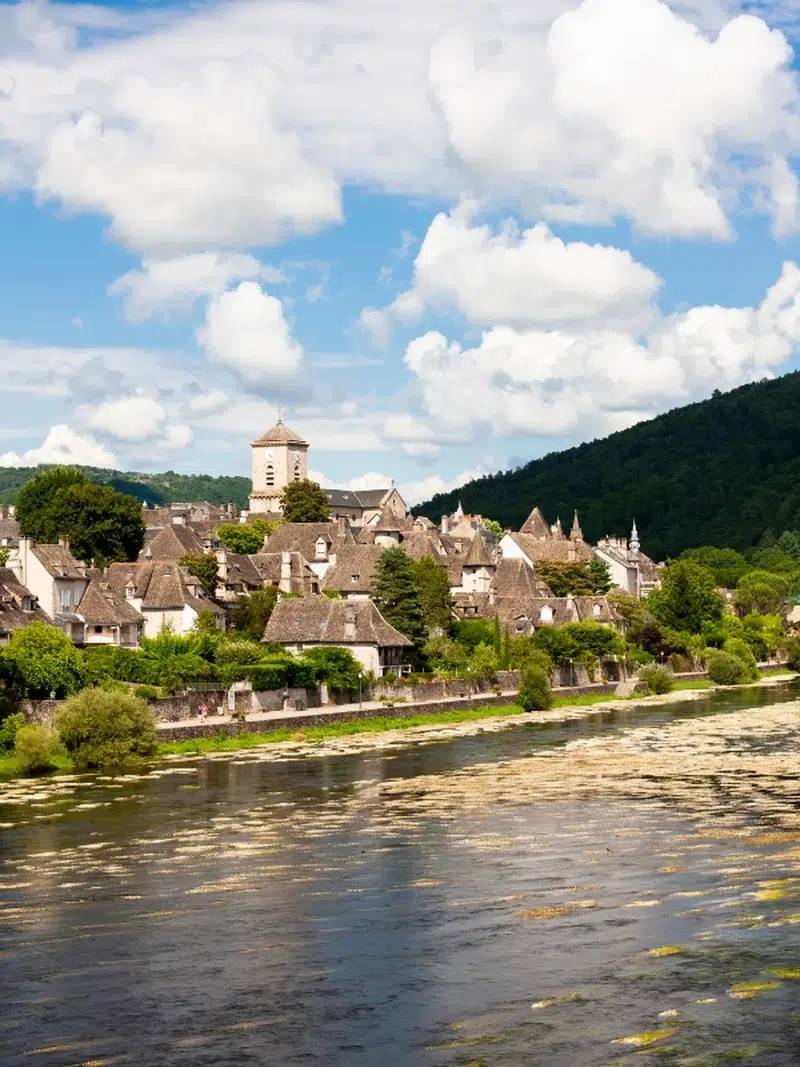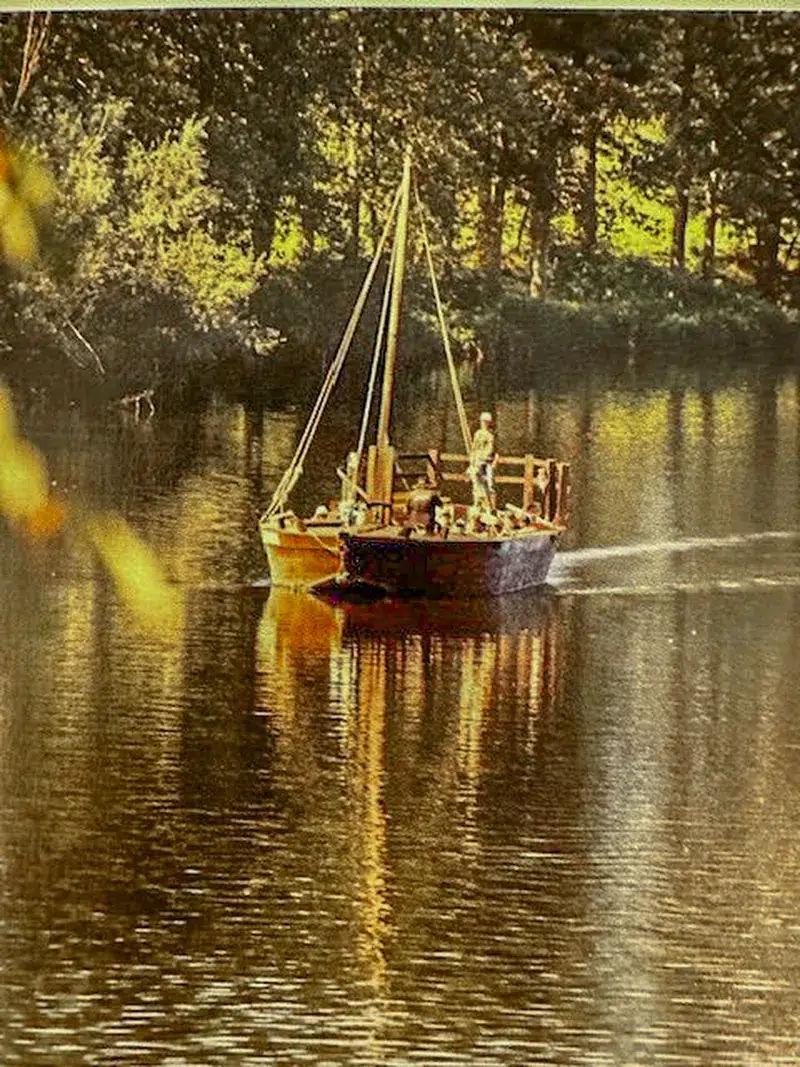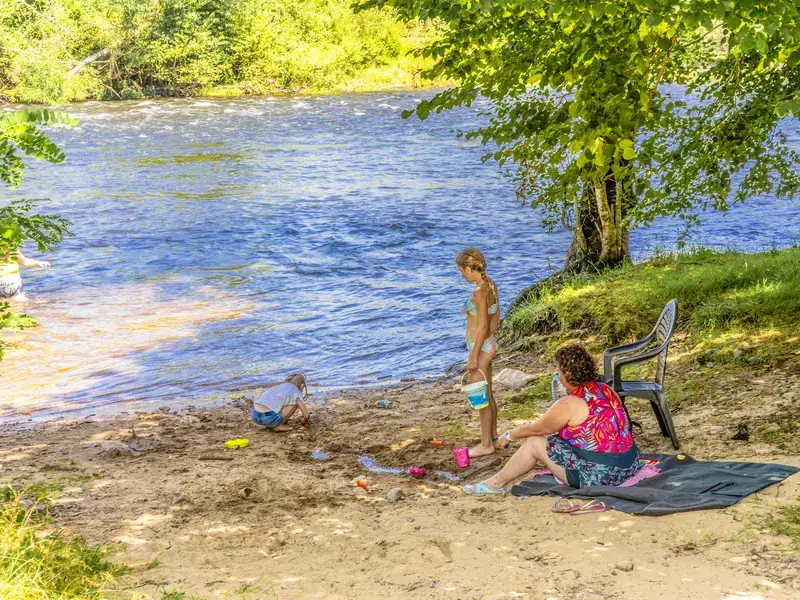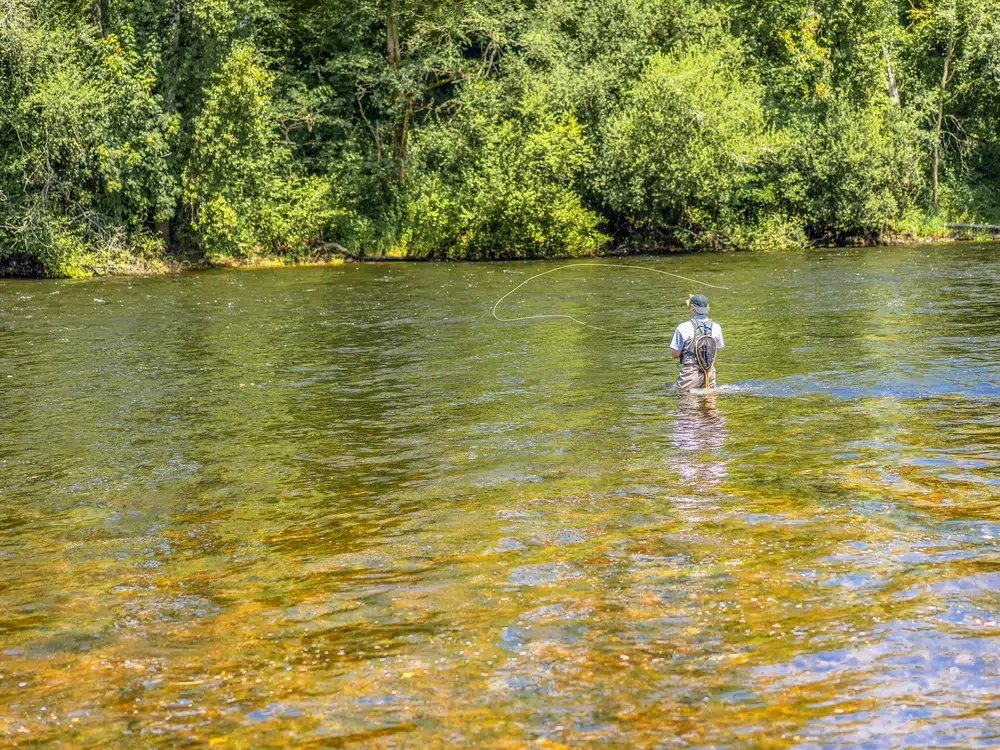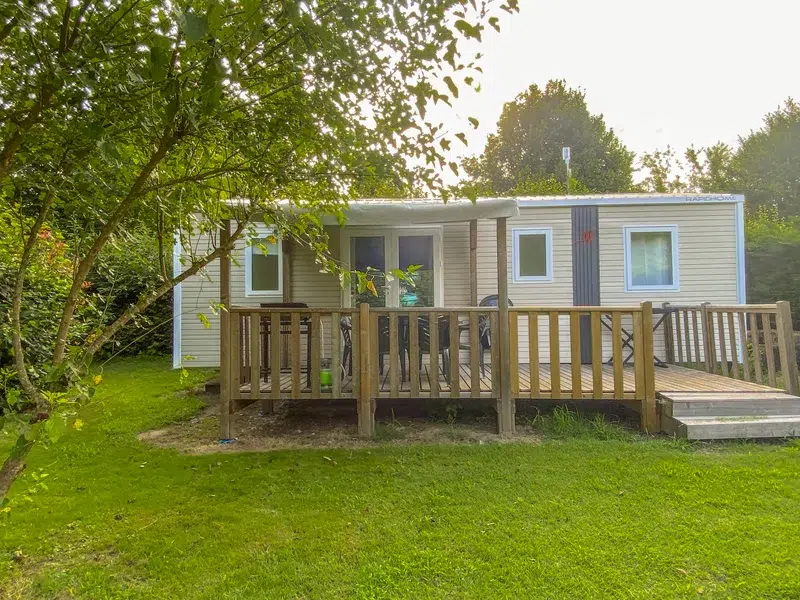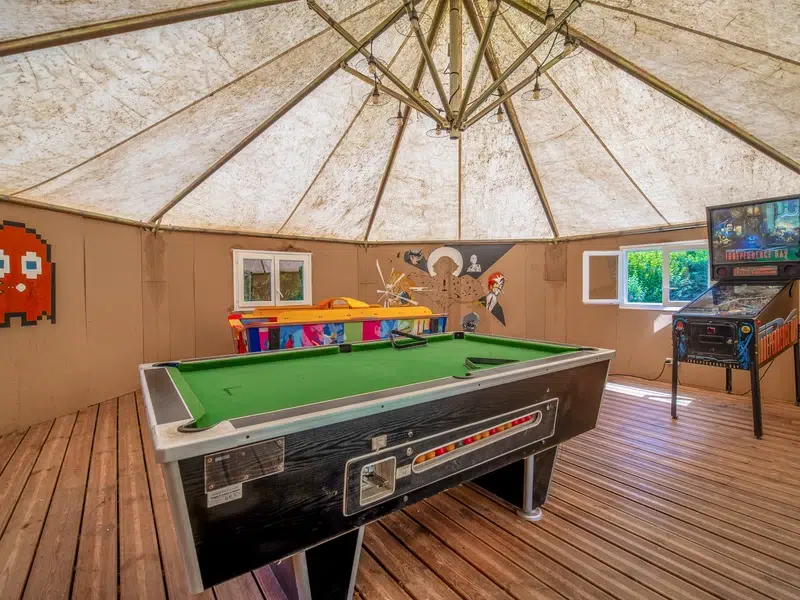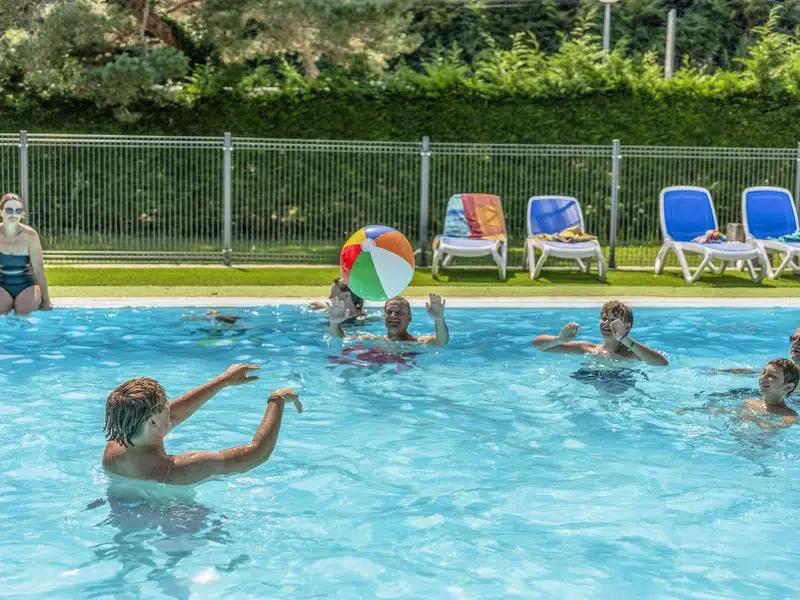Camping on the banks of the Dordogne: a wealth of discoveries
During your stay at our Flower l’Écho du Malpas campsite, you’ll be able to admire the Dordogne, which rises in the Auvergne. In the Sancy massif, between Mont Dore and La Bourboule, two rivers, the Dore and the Dogne, join to form the Dordogne, which flows for 483 km through 5 départements: Puy-de-Dôme, Cantal, Corrèze, Lot and Gironde. It ends its journey by meeting the Garonne at the Bec d’Ambes near Bordeaux. Along the way, 5 other départements feed the river: Creuse, Haute-Vienne, Lot-et-Garonne, Charente and Charente-Maritime. More than 60 rivers, streams and torrents flow into the Dordogne. A dozen dams regulate its flow. There are seasonal variations, with high water from December to April and low water from July to September.
For a long time, the Dordogne was a merchant river with a heavy traffic of goods. Until the XIXᵉ century, it supported a whole nation of bargemen. The river’s flow and depth forced them to adapt their boats.
The Dordogne, a river to explore
The upper Dordogne
In the ” Haute Dordogne ” (from Bort-les-Orgues to Souillac), they were known as Argentats or Courpets boats. As their name suggests, they were built in Argentat. They were “ephemeral” boats, flat-bottomed, with a shallow draught, designed for descent only. They carried wood from Corrèze or Auvergne. They carried firewood and charcoal, as well as wood for Bordeaux cooperage and shipbuilding. The descent generally took place from autumn to spring when the river was “merchantable”, but this period could be very short (27 days a year) due to early droughts or periods of excessive rainfall. At destination, the boats were sold along with their cargo. For the return journey, the corrézien boatman would walk or ride a mule up the Dordogne, carrying salt.
The average Dordogne
Downstream, on the ” Moyenne Dordogne” (from Souillac to Castillon), the depth of the river allowed the use of larger boats: gabares. From Souillac onwards, these boats could make round trips. Their more elaborate construction and use of wood enabled the boats to be more robust. The trip upstream was via a towpath running alongside the river.
The Lower Dordogne
Finally, in the ” Basse Dordogne ” (from Castillon to the Gironde estuary), navigation is possible all year round , even if the flow of the Dordogne influences the time taken to go downstream or upstream.
This epic story of the gabariers was written by Christian Signol and adapted for television in a soap opera: La Rivière Espérance.
Today, only the maritime section, downstream of Bergerac and the estuary, is classified as a “navigable waterway”. The river is therefore still used for leisure boating, with shallow-draft motorized pleasure boats. Upstream of this section, only fishing boats and canoes can be found.
Activities at the Dordogne campsite
Canoe the Dordogne valley
Whether you’re looking for a family day out or a sporting activity lasting several days, the “l’Écho du Malpas” and ” Copeyre Canoë ” campsites are the ideal starting points.
Copeyre Canoë is one of the best ways to discover the beauty of the Dordogne Valley.
Starting directly from the L’Écho du Malpas campsite, the “Copeyre Canoë” base offers a 22 km descent of the Dordogne river. The course is accessible to all, provided you are at least 7 years old and can swim. Just the right amount of current and rapids for a good compromise between relaxation, walking and sport! Enjoy the descent at your own pace, admiring the valley and its aquatic flora and fauna.
Leaving in the morning between 09:00 and 10:00, you can organize a picnic at the water’s edge where you can relax and swim. When you arrive in Beaulieu sur Dordogne at around 4:30 pm, the shuttle bus will take you back to the “Écho du Malpas” campsite with its water park, where you’ll return to your mobile home with plenty of memories and great photos.
Our advice: remember to pack a cap and sun cream, as the sun is formidable on the water. Never leave your lifejacket behind when you’re on the water. The Dordogne is a calm river in summer, and it’s tempting to dive from the canoe, but the difference in temperature between the air outside and the water in the river can create problems.
Leave the campsite directly after choosing your canoe or kayak. Don’t forget to pack a picnic lunch, or pick one up at the campsite snack bar. Don’t forget to rent a canister to protect your camera, glasses, telephone and picnic from the water, as capsizing is always a possibility… You can’t imagine how many trout or pike are resting at the bottom of the river with sunglasses and telephone…
On arrival in Beaulieu-sur-Dordogne, the shuttle will be waiting to take you back to your mobile home. No need to take a car, a car-free day is just too good!
The possibility of other routes: Copeyre canoe is 120 km down the Dordogne. From the “Écho du Malpas” campsite in Argentat to Beynac-et-Cazenac, you’ll be able to navigate through 3 departments with a wide range of landscapes: Corrèze, Lot and Dordogne. Different circuits are available to suit your desires. Along the way, you’ll pass the castles of Castelnau-Bretenoux, Belcastel, La Treyne, Fénelon, Montfort, Castelnaud la Chapelle, Fayrac and Beynac.
Ideal campsite for fishing on the banks of the Dordogne river
Corrèze is one of France’s richest regions for fishing! With over 5000 km of waterways surrounded by magnificent scenery, you’ll be able to practise all kinds of fishing techniques according to the season and your desires! Our campsite is ideally located on the banks of the Dordogne River. It offers an exceptional fishing environment, right on the water!
You’ll find a wide variety of landscapes, some of them still very wild. The scenery has a Canadian touch in autumn, according to many regular visitors.
Whether you’re a seasoned angler or a family looking for “nature” activities, the Dordogne will not leave you indifferent. This river, dotted with places full of history and culture, will carry you away in its sumptuous and rich natural setting.
Once renowned for offering the best salmon spawning grounds and trout “corners”, the Dordogne is home to an extraordinary variety of fish thanks to theexcellent quality of its water.
Today, the lake is mainly used for trout fishing, but also for pike, zander, carp and perch.
Come and ask the regulars what they’ve got on the end of their lines – whatever the fish, it’s always “this big”!
Fishing, including fly-fishing, is just one of the many activities you can enjoy during your stay at the Écho du Malpas campsite near Argentat! Whether on a lookout, in a boat or in a canoe, discover the thousand and one facets of fishing.
Please do not hesitate to contact the campsite reception for further information.
